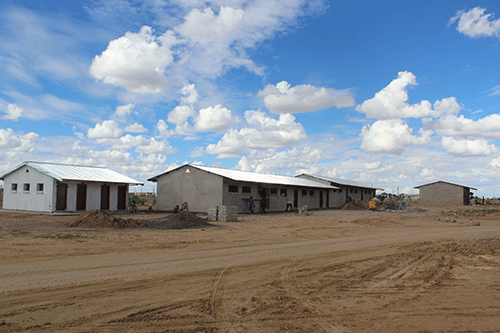Although Hardap has its challenges, such as a shortage of qualified pre-primary teachers, the region managed to achieve the universal primary access goal, with a 97% access rate in 2021.
The pre-primary access rate was measured only in government schools.
This is contained in the 2021 Hardap regional profile report, with a focus on education, arts and culture.
Currently, Hardap has 64 schools, of which 54 (84%) are run by the State and accommodate approximately 27 597 learners and 1 015 teachers, respectively.
Of these teachers, 906 are in government schools, while 109 are in private schools.
The Hardap schooling structure is characterised by a total number of 44 primary schools, six combined schools, 10 secondary schools, 12 clusters and five other school settings.
In terms of early childhood development (ECD) facilities and kindergartens, the region has 19 such centres, aimed to yield both immediate and long-term benefits for the child.
Sadly, all these centres in the region are operating without being registered with the education as well as the gender equality and child welfare ministries.
Additionally, the region has 80% of teachers with more than two years of tertiary qualification.
However, the region is affected by the substantial number of school dropouts, which is attributed to the movement of parents.
The report also indicates that due to long distances to schools, especially in the rural area, some children are forced to start school at an older age to be able to walk long distances to schools.
Equally, it reveals the region has more learners in earlier grades than in higher grades.
It further shows there are more learners in grade five than in grade four due to the repetition policy (no learner should repeat a grade more than once).
Although the region has a model, called the Amos Meerkat School Project (AMSP), targeting farm workers’ children who do not have a pre-school to go to, such an initiative is also challenged.
One of the greatest challenges facing the AMS is the shortage of qualified preschool teachers and officials who can help with the monitoring and supervision of the works of these preschool teachers.
In addition, AMS operates by itself and does not pay salaries for teachers.
The project only incentivises teachers with a small monthly living allowance of N$1 500 and N$2 000 per month or N$200 per child at some centres.
Recent statistics on qualified and unqualified teachers show the region has increased the number of qualified teachers to 948 (92%) and drastically reduced the number of unqualified and under-qualified teachers to 77 (8%) in 2021.
The statistics data further shows that about 78% of unqualified and under-qualified teachers teach Khoekhoegowab and Afrikaans, whilst many teach in the junior primary phase (pre-primary to grade three).
The Hardap education directorate accomplished some projects, which include the completion of seven teachers’ housing at PJ Tsaitsaib, Mukorob, Mathias Hansen, Samuel Veldskoen and Usib primary schools, as well as the Daweb and PI Groenewaldt combined schools.
Other renovations include the Mariental High School girl hostel and Empelheim Combined School, as well as the construction of a pre-primary classroom at Usib Primary School.
Other achievements highlighted include the expansion and painting of the C//Oaseb High School administration block, security fencing at Rehoboth Primary School as well as power upgrading at Dannie Joubert Combined School.
- anakale@nepc.com.na


